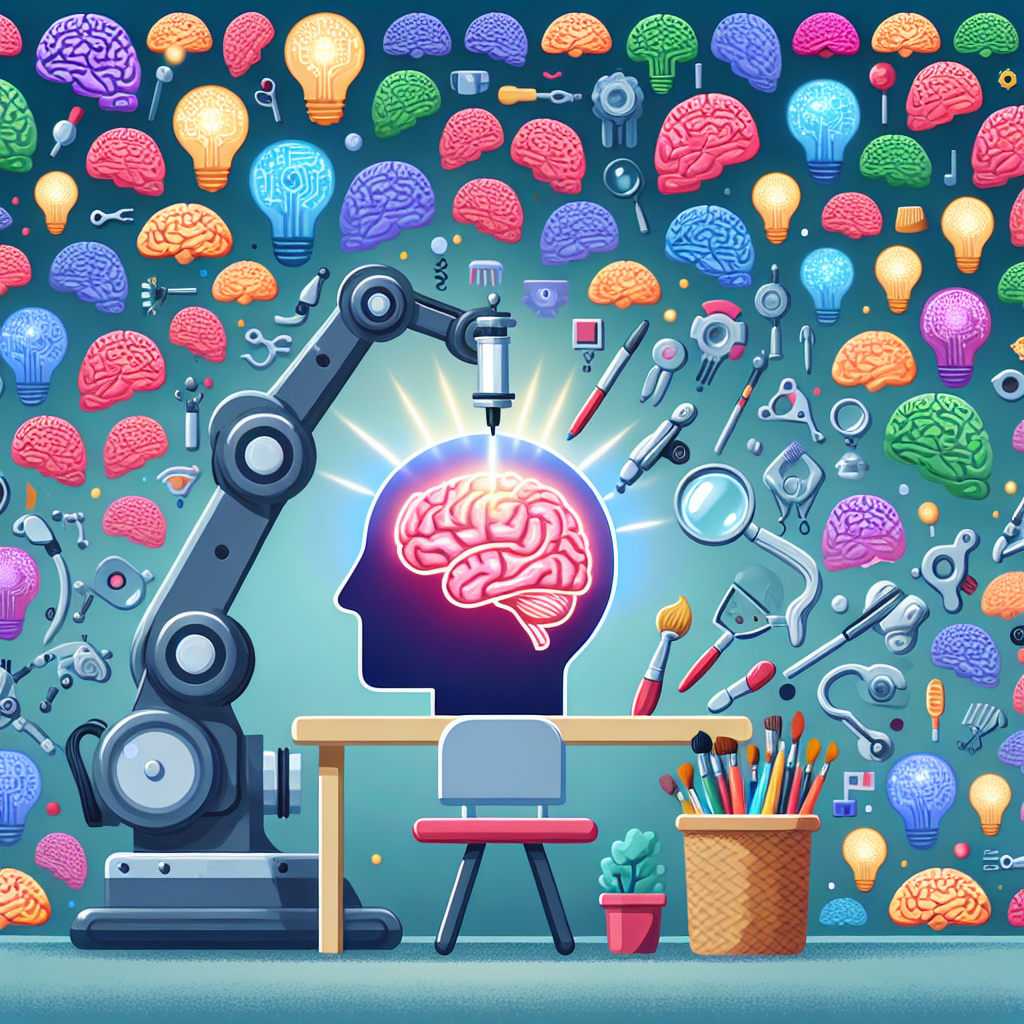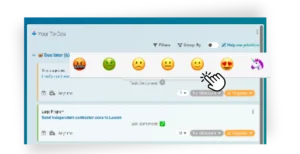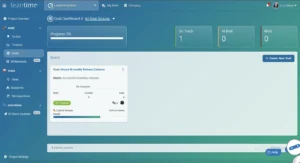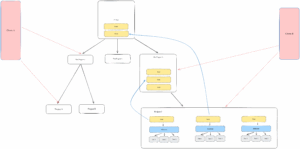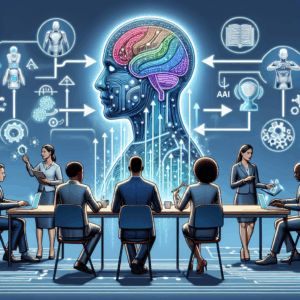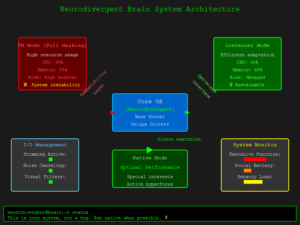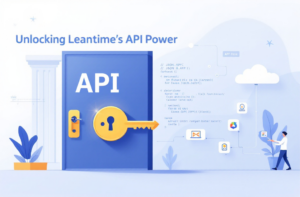If you’ve ever opened a project management tool and immediately felt overwhelmed by all the buttons, tabs, and features that seem designed for someone else’s brain – you’re not alone. And as someone who’s spent years building software systems, I can tell you: you’re not wrong.
Most project management tools were built by neurotypical teams for neurotypical users. They assume everyone can easily prioritize tasks, remember context when switching between projects, and stay motivated by abstract deadlines. For those of us with ADHD, autism, or other neurodivergent conditions, these tools often feel like they’re working against us instead of with us.
That’s why we built Leantime differently.
The Problem I Actually Faced
I’m Marcel, one of Leantime’s co-founders and the CTO. I immigrated to the US from Germany and worked my way up through startups to roles at Google and Twilio as a Technical Program Manager. Throughout that journey, I got really good at solving complex technical problems, but I struggled constantly with the project management tools we were supposed to use.
The irony wasn’t lost on me. I was building sophisticated software systems while fighting daily battles with tools that were supposedly designed to help me organize work. I learned to navigate and master spreadsheets but they are hard to share with coworkers. Gloria, my co-founder, had similar experiences coming from nursing into product management. We both succeeded despite the tools, not because of them.
When we realized that 53% of tech workers identify as neurodivergent, but their employers recognize only 3% as such, we knew something was fundamentally broken. As engineers, we know that when your system has a 1,650% error rate, you don’t blame the users – you fix the system.
Features That Actually Support How Different Brains Work
Emotional Context Through Task Sentiment
One of our most popular features is something deceptively simple: emoji sentiment tracking for tasks. You can tag any task with how you feel about doing it – excited, frustrated, anxious, bored.
This isn’t just a cute UI feature. For people with ADHD, emotional state is often the biggest predictor of whether a task will get done. Traditional tools ignore this completely. Leantime captures it as data and uses it to help you structure your work better.
When our AI notices you consistently avoid tasks marked with frustrated emojis, it might suggest breaking them down differently or tackling them when your energy is higher. It’s like having a productivity coach who actually understands executive function.
The My Work Dashboard That Cuts Through the Noise
Most project management tools throw everything at you at once. Leantime’s My Work Dashboard shows you exactly what matters today, this week, and beyond – without the cognitive overhead of processing dozens of irrelevant items.
You see your progress on goals (the big picture stuff that keeps you motivated), your scheduled tasks for today, and a clean overview of what’s coming up. No hunting through multiple projects or trying to remember which tasks are actually important.
From a technical perspective, this required building systems that can aggregate and intelligently filter information from across all your projects, but the user experience is just: open Leantime, see what matters, get to work.
Goal Boards That Keep the Big Picture Visible
People with ADHD often struggle with tasks that feel meaningless or disconnected from larger goals. Autistic individuals frequently excel when they understand the systematic purpose behind their work. Traditional tools bury your goals under layers of project navigation.
Leantime’s goal boards keep your objectives front and center. You can see exactly how completing specific milestones drives progress toward your bigger goals. It’s dopamine-driven design – every task completion feels meaningful because you can see its connection to what you’re trying to achieve.
Milestone-Focused Timeline View
Instead of overwhelming Gantt charts or endless task lists, our timeline view organizes work around major deliverables and outcomes. You see clear phases of work, how they connect, and what you’re building toward.
This works especially well for neurodivergent minds because it provides structure without micromanagement. You understand the journey from where you are to where you’re going, which makes it easier to maintain motivation and momentum.
Clean Interface That Reduces Cognitive Load
We intentionally keep our interface minimal and focused. There’s a grayscale mode for when you need to minimize visual distractions. Information is organized in distinct, clearly-bounded sections rather than dense layouts. We don’t bombard you with notifications unless something actually needs your attention.
Every design decision prioritizes cognitive efficiency over feature density. The result is a tool that feels calm to use, even when you’re managing complex projects.
The Strategic Structure That Actually Makes Sense
Unlike most project management tools that start with tasks and try to organize upward, Leantime starts with your bigger picture and works down:
Strategy → Plans → Projects → Milestones → Tasks
This hierarchy helps neurodivergent minds stay connected to purpose and meaning. You’re not just checking off random items – you’re working systematically toward goals that matter to you.
Open Source Means You Control Your Tools
Making Leantime open source wasn’t just about transparency – it was about giving users control over their cognitive tools.
When you’re neurodivergent, small interface changes can have huge impacts on usability. Maybe you need a specific color scheme, or a particular way of organizing information, or integration with tools we haven’t thought of yet.
With traditional SaaS tools, you’re stuck with whatever the product team decides. With Leantime, you can modify the code, contribute improvements back to the community, or work with your IT team to customize it for your specific needs.
We’ve had users create custom plugins for everything from advanced visual organization systems to integration with ADHD medication reminder apps. That’s the kind of innovation that only happens when you give people the source code.
Plugin Marketplace for Personal Customization
Our plugin marketplace lets you add exactly the features you need without cluttering the interface for everyone else. Need advanced strategy canvases? There’s a plugin. Want Pomodoro timer integration? We’ve got you covered. Need custom fields for tracking specific types of information? Available.
This modular approach means Leantime can grow with your needs without becoming overwhelming. You start simple and add complexity only where it adds value for your specific working style.
NEXT: AI That Understands Your Work Patterns
Our AI isn’t just another chatbot. It understands your project context, tracks your working patterns, and provides suggestions that actually make sense for your situation.
If you consistently struggle with certain types of tasks, it learns and adapts. If you work better in the morning, it notices and adjusts recommendations. If you’re more productive when you can see the big picture, it emphasizes goal connections.
The technical implementation involves custom embeddings and context-aware agents, but what you experience is just: helpful suggestions that get better over time.
The Response Has Been Overwhelming (In a Good Way)
We keep getting messages from users saying things like “I’ve finally found a tool that works the way my brain works!” or “This is the first project management system that doesn’t make me feel stupid.”
One user told us that for the first time, they could see their ADHD as a feature, not a bug, in their workflow. Another mentioned that our approach to breaking down complex projects into clear milestones helped them overcome years of project paralysis.
We’ve had over 1.8 million Docker pulls and contributors helping translate Leantime into 40+ languages. But what really validates our approach is feedback from neurodivergent users who say they’re finally productive with project management software.
Building Different, Not Just Better
We’re not trying to out-feature Jira or compete directly with Monday.com. We’re building something fundamentally different – project management software designed from the ground up for cognitive accessibility.
That means making different trade-offs, prioritizing different metrics, and measuring success differently. Instead of optimizing for maximum feature density, we optimize for cognitive efficiency. Instead of measuring engagement time, we measure task completion satisfaction.
As a small team with a technical background, we can make these choices. We can prioritize the user experience of a neurodivergent developer over the purchasing preferences of a neurotypical procurement department. And we can build the technical infrastructure needed to support these features properly – real-time interactions, intelligent filtering, and context preservation that actually works.
Leantime is free to try, open source, and available at leantime.io. Whether you’re managing personal projects, running a startup, or coordinating team work, we’d love to see if it works better for your brain than what you’re currently using.
If you’re interested in contributing to an open source project that’s actually making a difference for neurodivergent individuals, check out our GitHub repository or join our Discord community.


